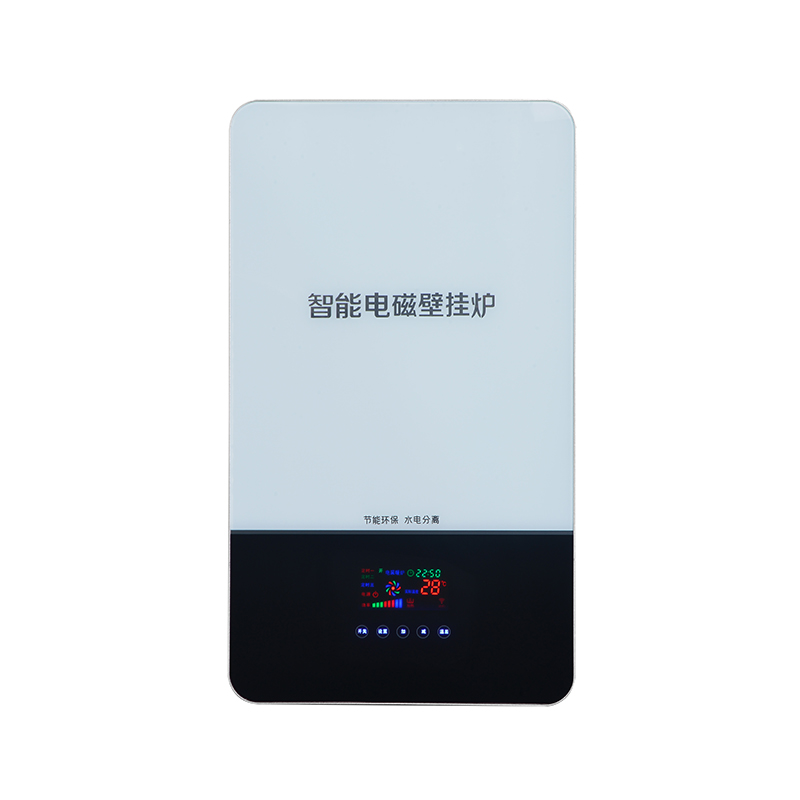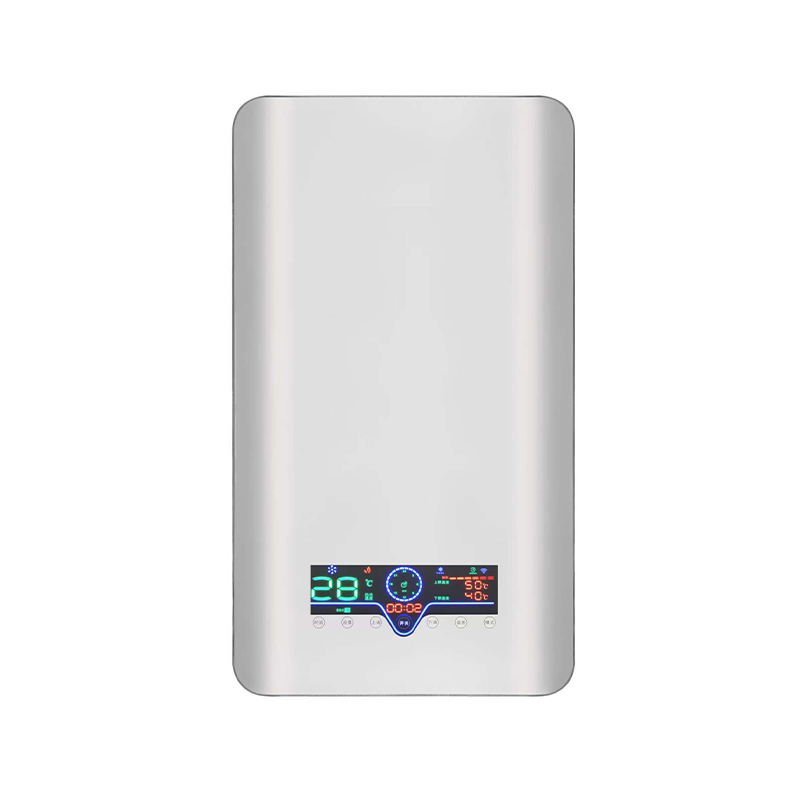What are the safety advantages of the flat-plate electromagnetic heating furnace's water-electricity separation design?
Release Time : 2025-08-06
The flat-plate electromagnetic heating furnace, with its unique water-electricity separation design, offers significant safety advantages, providing users with a more secure user experience. This design concept fundamentally addresses the safety risks associated with direct contact between water and electricity in traditional electric heating devices, making the cooking process safer and more reliable.
First, water-electricity separation means that within the electromagnetic heating furnace, current does not flow directly through the heating area. Specifically, electromagnetic heating technology utilizes the principle of electromagnetic induction, generating an alternating magnetic field through a coil. When a pot is placed on the stovetop, this field creates eddy currents at the bottom of the pot, causing the pot to heat itself and complete the cooking process. Since the current does not need to be introduced into the part of the pot that actually contacts the food and water during the heating process, the risk of electric shock due to leakage is greatly reduced. Even in the event of an unexpected situation, such as a spill or a wet pot bottom, the possibility of direct contact between current and water is effectively prevented, ensuring user safety.
Secondly, the separation of water and electricity enhances the device's overall protection level, making it adaptable to more complex kitchen environments. Liquid spills are common in modern kitchens, especially during operations like boiling and stewing. With traditional electric heating equipment, these spills can seep into the appliance, causing short circuits or other electrical failures. However, the flat-plate electromagnetic heating furnace's meticulously designed structural layout completely seals and protects the electrical components, preventing any moisture from entering critical circuit areas. This rigorous protection not only enhances the device's durability but also significantly reduces the likelihood of failures caused by external factors, ensuring long-term stable operation.
Furthermore, the separation of water and electricity helps improve the electromagnetic heating furnace's fire resistance. With traditional heating methods, resistance wire heating elements can easily generate hot spots after prolonged operation, increasing the risk of fire. In contrast, electromagnetic heating heats only the metal container itself, distributing the heat evenly and minimizing localized overheating. Furthermore, the lack of open flames further reduces the potential for fire. This is particularly important for home kitchens and commercial catering establishments, especially in environments with limited space and a high concentration of flammable materials. Electromagnetic heating furnaces with a water-to-electricity separation design are undoubtedly a safer option.
Furthermore, the water-to-electricity separation design provides electromagnetic heating furnaces with greater flexibility and adaptability. Since the current doesn't directly flow to the heating surface, a wider variety of cookware materials can be used, as long as they have good magnetic conductivity. This allows users to freely choose the right cookware for their cooking needs without worrying about compatibility or safety issues. This also provides manufacturers with greater room for innovation in product design, allowing them to focus on optimizing electromagnetic heating efficiency and improving the user experience without overly considering electrical safety restrictions.
Finally, the water-to-electricity separation design also provides significant maintenance benefits. If a malfunction requires repair, technicians can directly troubleshoot and repair the affected component without worrying about water intrusion, which could cause extensive and complex damage to the entire system. Furthermore, cleaning and maintenance are simplified and quicker, allowing users to safely wipe the stovetop and surrounding area without worrying about moisture seeping into the internal circuitry and damaging it. This easy-to-maintain feature not only extends the product's lifespan but also reduces the user's ongoing maintenance burden.
In summary, the flat-plate electromagnetic heating furnace's water-to-electricity separation design, through numerous improvements and optimizations, offers users an efficient and safe cooking solution. Whether from the perspectives of preventing electric shock, waterproofing and moisture-proofing, fire retardancy, or ease of maintenance, this design concept demonstrates a deep focus on user safety and, through technological innovation, delivers a truly worry-free cooking experience. With technological advancements and heightened safety awareness, we believe that more and more homes and professional kitchens will choose this safer and more reliable electromagnetic heating system in the future.
First, water-electricity separation means that within the electromagnetic heating furnace, current does not flow directly through the heating area. Specifically, electromagnetic heating technology utilizes the principle of electromagnetic induction, generating an alternating magnetic field through a coil. When a pot is placed on the stovetop, this field creates eddy currents at the bottom of the pot, causing the pot to heat itself and complete the cooking process. Since the current does not need to be introduced into the part of the pot that actually contacts the food and water during the heating process, the risk of electric shock due to leakage is greatly reduced. Even in the event of an unexpected situation, such as a spill or a wet pot bottom, the possibility of direct contact between current and water is effectively prevented, ensuring user safety.
Secondly, the separation of water and electricity enhances the device's overall protection level, making it adaptable to more complex kitchen environments. Liquid spills are common in modern kitchens, especially during operations like boiling and stewing. With traditional electric heating equipment, these spills can seep into the appliance, causing short circuits or other electrical failures. However, the flat-plate electromagnetic heating furnace's meticulously designed structural layout completely seals and protects the electrical components, preventing any moisture from entering critical circuit areas. This rigorous protection not only enhances the device's durability but also significantly reduces the likelihood of failures caused by external factors, ensuring long-term stable operation.
Furthermore, the separation of water and electricity helps improve the electromagnetic heating furnace's fire resistance. With traditional heating methods, resistance wire heating elements can easily generate hot spots after prolonged operation, increasing the risk of fire. In contrast, electromagnetic heating heats only the metal container itself, distributing the heat evenly and minimizing localized overheating. Furthermore, the lack of open flames further reduces the potential for fire. This is particularly important for home kitchens and commercial catering establishments, especially in environments with limited space and a high concentration of flammable materials. Electromagnetic heating furnaces with a water-to-electricity separation design are undoubtedly a safer option.
Furthermore, the water-to-electricity separation design provides electromagnetic heating furnaces with greater flexibility and adaptability. Since the current doesn't directly flow to the heating surface, a wider variety of cookware materials can be used, as long as they have good magnetic conductivity. This allows users to freely choose the right cookware for their cooking needs without worrying about compatibility or safety issues. This also provides manufacturers with greater room for innovation in product design, allowing them to focus on optimizing electromagnetic heating efficiency and improving the user experience without overly considering electrical safety restrictions.
Finally, the water-to-electricity separation design also provides significant maintenance benefits. If a malfunction requires repair, technicians can directly troubleshoot and repair the affected component without worrying about water intrusion, which could cause extensive and complex damage to the entire system. Furthermore, cleaning and maintenance are simplified and quicker, allowing users to safely wipe the stovetop and surrounding area without worrying about moisture seeping into the internal circuitry and damaging it. This easy-to-maintain feature not only extends the product's lifespan but also reduces the user's ongoing maintenance burden.
In summary, the flat-plate electromagnetic heating furnace's water-to-electricity separation design, through numerous improvements and optimizations, offers users an efficient and safe cooking solution. Whether from the perspectives of preventing electric shock, waterproofing and moisture-proofing, fire retardancy, or ease of maintenance, this design concept demonstrates a deep focus on user safety and, through technological innovation, delivers a truly worry-free cooking experience. With technological advancements and heightened safety awareness, we believe that more and more homes and professional kitchens will choose this safer and more reliable electromagnetic heating system in the future.





